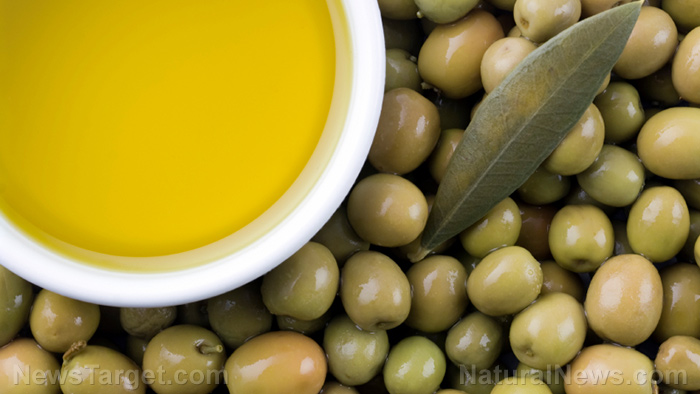Extract from moringa trees found to prevent cataract formation
06/03/2020 / By Evangelyn Rodriguez

The clouding of the eye’s natural lens, known as a cataract, is the most common cause of visual impairment among Americans. According to data from the University of Illinois at Chicago, more than 40 percent of non-Hispanic whites, African Americans and Hispanics with impaired vision develop cataracts. The World Health Organization (WHO) considers cataracts the second leading cause of visual impairment worldwide.
Several risk factors are linked to cataract formation, such as aging, diabetes, excessive exposure to sunlight and hypertension. However, recent studies have found that oxidative stress, which results from the imbalance between antioxidants and reactive oxygen species (ROS), is the main cause of cellular damage in the eyes that leads to cataracts. Hence, scientists have begun to explore the protective role of antioxidants against eye diseases.
In a recent study, Chinese researchers investigated the ability of Moringa oleifera, a plant known for its high antioxidant content, to prevent cataract formation. Using an extract derived from its stem (MOSE), they evaluated M. oleifera‘s protective effect on cultured mouse lenses exposed to oxidative stress. The results of their experiment were published in the journal BMC Complementary and Alternative Medicine.
Moringa protects against cataracts by increasing antioxidant activity
M. oleifera, also known as horseradish tree, drumstick tree or simply moringa, is a widely studied medicinal plant that contains high levels of antioxidant compounds. To find out if moringa can prevent cataract formation, the researchers pre-treated cultured mouse lenses with 0.5 and 1 mg/mL MOSE for 24 hours. Then, they exposed the lenses to 1 millimolar (mM) hydrogen peroxide for another 24 hours.
After 48 hours, the researchers measured lens opacification, reactive oxygen species (ROS) production, reduced glutathione (GSH) content and the activities of two antioxidant enzymes, namely, superoxide dismutase (SOD) and catalase (CAT). They also measured the expression of peroxisome proliferator-activated receptor alpha (PPARa), a nuclear receptor that, in humans, helps protect against vision-threatening eye diseases like cataracts.
The researchers reported that MOSE at a concentration of 1 mg/mL alleviated lens opacification, reduced ROS generation and increased GSH content in the cultured lenses. MOSE also increased SOD and CAT activities and up-regulated the expression of SOD, CAT and PPARa.
Based on these findings, the researchers concluded that moringa extracts can alleviate oxidative stress-induced cataract formation by enhancing the endogenous antioxidant system in the eyes.
Other health benefits of moringa
Moringa is a tree native to India but is now also grown in parts of Asia, Africa and South America. Various parts of this tree have been used as food and medicine since ancient times. Today, moringa is still used as a natural remedy for rheumatism, inflammation and diabetes, especially in many Asian countries. Moringa has also become a popular cooking and baking ingredient, as well as a health supplement.
According to studies, moringa has plenty of beneficial properties, such as anti-fungal, antiviral, antidepressant and anti-inflammatory properties. These, together with its impressive nutritional profile, make moringa truly deserving of its name, “the miracle tree.”
Here are some of the health benefits associated with moringa:
- Its oil can protect and nourish the skin and the hair.
- It can prevent or treat edema.
- It can protect the liver from damage.
- It can prevent cancer development.
- It can treat stomach disorders and prevent gastrointestinal infections.
- It can improve digestion.
- It provides calcium and phosphorus to help keep bones strong.
- It can protect the heart from cardiac damage.
- It accelerates wound healing and reduces scars.
- It helps lower blood sugar levels.
- It helps reduce the severity of asthma attacks.
- It prevents the formation of kidney stones.
- It helps reduce blood pressure.
- It improves iron absorption.
- It helps with weight loss.
Despite moringa being around for ages, users have reported very few side effects. However, moringa can interfere with the actions of certain medications, such as those used for thyroid problems, diabetes and high blood pressure. For your safety, consult with a trusted natural health practitioner before using moringa as a remedy or taking moringa supplements.
Sources include:
BMCComplementMedTherapies.BiomedCentral.com
Submit a correction >>
Tagged Under:
alternative medicine, antioxidants, cataracts, eye diseases, eye health, herbal medicine, Herbs, moringa, natural cures, natural medicine, oxidative stress, plant medicine, prevention, remedies, research, supplements
This article may contain statements that reflect the opinion of the author
RECENT NEWS & ARTICLES
COPYRIGHT © 2017 PREVENTION NEWS





















